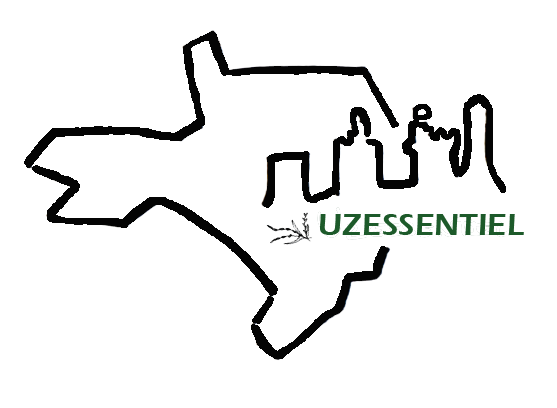Safari trip to the Sigean African Reserve
At about 200km distance from Uzès, the Sigean African Reserve offers a safari experience in the heart of the Occitan region.
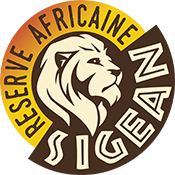
A blend of Africa just a stone's throw from the Mediterranean coast, the African Reserve of Sigean opened its doors in 1974, the creation of Paul de La Panouse (the man behind the Peaugres safari and founder and director of the Château de Thoiry wildlife park) and Daniel de Monfreid.
The Reserve's role is turning around the discovery of wildlife, but also the conservation and research (biology, ethology, physiology or animal pathology... in collaboration with national and international universities, veterinary schools or research units) and supported in this by the Friends of the Reserve association, created in 1989, for the "scientific research, educational and wildlife conservation activities by taking part in wildlife conservation initiatives, running educational programmes for schoolchildren, organising study trips and awarding grants to researchers"...
|
The Sigean African Reserve is home to more than 3,800 animals over more than 350 hectares.
|
 Behind the African life of the reserve, the figures
Behind the African life of the reserve, the figures
From the very first 88 ha allocated to the Reserve in 1974, the place has grown consequently. In 1987, 18 hectares were granted for the African plain, where "different species of African antelopes, zebras, ostriches, marabouts, etc. live side by side"... For its 20th anniversary, the reserve inaugurated L'île à Magots (Macaca Sylvanus), an island dedicated to this macaque specie "native to the Atlas Mountains of Algeria, Libya, Tunisia and Morocco, along with a small introduced population in Gibraltar" (wikipedia), to which 35 hectares of African bush were added in 1997, to be explored by car.
|
Today, the reserve boasts over 300 hectares devoted entirely to wildlife.
|
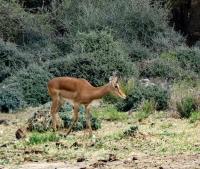
The animal population has also strongly increased. From a thousand in 1974 to several thousand in 2023, the Reserve is home to more than 140 species, mainly from Africa (60% of its population), but also from other continents, with a total of some 10,000 births, some of which are exceptional in their rarity: pink-backed pelicans, cheetahs, wild dogs, Somali donkeys....
Mammals make up 23% of the reserve: Rhinos (the first white rhino was born in 2012), giraffes (Zephir,the first giraffe, was born in 2000), zebras, wildebeests, springboks, impalas, blesboks, kobs lechwe, lions, warthogs, wild dogs, cheetahs (the first cheetahs were born in 88), chimpanzees (the first chimpanzees arrived in 95 and the first baby, Pablo, was born in 99)... this for the African fauna, but also Tibetan bears, wallabies, gibbons... representing other continents.
|
Did you know: In 1978, 3 dromedaries arrived from the Safari Parc Andaluz in Spain, while the first Saïmiris monkeys from Bolivia arrived in 1979. 3 African elephants were introduced in 1982. The first Cuvier's gazelles were born in the Reserve in 2017. But where are the elephants? From 83 to 2017, the African Reserve welcomed a small group of African elephants and 4 births were welcomed, including Chupa at Christmas 2003. However, following the death of the large breeding male N'Dumé in 2016, the breeding female Csami left Sigean for Germany to join another breeding group.
|
Then there are 48% birds: Pelicans (the first pink-backed pelicans, which live in complete freedom, were born in 1980 and the first grey pelicans were born in Europe), storks, cranes, macaws, ostriches (the first 4 arrived from Spain at the same time as the dromedaries), emus, peacocks, pink flamingos and many species of anatidae: geese, swans and ducks. In 2018, the opening of the large immersion aviary will provide a home for many other species.
And 29% reptiles: alligators (including 6 Mississippi alligators born in 2012), tortoises and water turtles, snakes, iguanas, pythons, boas, etc.) Good to know: In 1978, the first solar house was built for the alligators, the second for the reptiles came in 82, followed in 85 by 6 vivariums.
The Reserve also means... 3.35 tonnes of food distributed every day, 90 permanent employees, plus 69 seasonal workers in the summer, a veterinary clinic and a laboratory that have been operating full-time since 1987, for prophylaxis, care and research activities... And an average of 330,000 visitors a year.

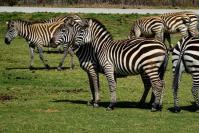
VISIT
How could you miss the opportunity to go on safari in the beautiful African Reserve of Sigean, in the South of France?
How could you miss the opportunity to immerse yourself in the heart of the Serengeti (Tanzania), the Kruger Park (South Africa) or the Chobe Reserve (Botswana) without even leaving the Occitanie region and setting a step in Africa? Well, that's no more a question... Let's hit the road together and go on safari!
There are a large number of areas to explore, all at a leisurely pace by car. 7.5 kms through the bush with its springboks, cobes defassa (these large antelopes whose males proudly display large ringed horns), the splendid Grévy's zebras, impalas and Nile cobes, the savannah with plains zebras, watusi, ostriches, blue wildebeest, Somali donkeys (including Malika, born in 2013 in Sigean), warthogs that cross the track as well as, much more impressive, the massive rhinoceroses.
The bear park offers only a distant glimpse of the ursids in midsummer, as they prefer to stay in the shade... Same thing goes for the lion park, the predators no doubt lurking for prey under one of the park's many trees. What a shame! We haven't seen anything, but it wasn't for lack of trying...
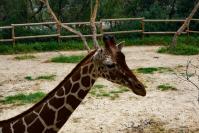
Then the walk continues on foot. And we're in for a completely different experience. Along the ponds to visit the many birds, the monkeys, the wild dogs and the vivariums. A perfect way to end the visit (on our way back to the car park, we were somehow surprised to come across one or two storks walking by. What a lovely surprise!).

Birds can be admired in the ponds, and giraffes are happy to come and meet visitors, sometimes in the company of a keeper who explains their life in captivity but also in their natural environment. We also cross paths with wild dogs, Cape porcupines, monkeys and more.
The walking tour of course includes a visit to the gigantic aviary too, where African marabou, black-crowned night herons, sacred ibises and grackles all await your viewing pleasure. But don't forget: designed as "a lakeside habitat planted with reeds, ash and tamarisk", the aviary "is home to a population of several hundred birds typical of African wetlands and riparian forests".
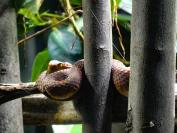
Don't forget either to visit the vivarium, where some species are much more mysterious than others... It's up to you to find them in their greenhouses. Green tree lizards, Duméril's boas, giant Madagascar geckos, Gabon vipers...
Good to know too: the Mediterranean basin is one of the "biodiversity hotspots of 2023", combining two mandatory conditions: a very high level of biodiversity and strong anthropogenic pressures on this biodiversity and on ecological habitats. The concept was developed in 1988 at Oxford University by the team of Normand Myers, a researcher specialising in the relationship between ecology and economics (Myers, 1988). The researcher "considered that 44% of the planet's plant species and 35% of its terrestrial vertebrate species were confined to 1.4% of the surface of the continents. He identified 25 sites, of varying size, characterised by an exceptional concentration of endemic species and a serious risk of degradation" (Folio, 2011) (geoconfluences.ens-lyon).
The right address: Réserve Africaine de Sigean, RD 6009, 19 chemin Hameau du lac, 11130 SIGEAN, contact@reserveafricainesigean.fr. Open from 1 July to 31 August from 8.30am to 5pm (ticket office closed), park closes at 7.30pm, from 1 September to 28 October from 9am to 5pm (ticket office closed), park closes at 6.30pm, from 29 October to 30 March from 9am to 4pm (ticket office closed), park closes at 5.30pm. Tickets available online.
Useful links: La Réserve de Sigean also has partnerships with international sites in Senegal, South Africa and Congo, as well as with French associations. Find out more.
Source: Press kit of the Réserve Africaine de Sigean.
